Whakaari White Island trial hears expert evidence that there was a one in 20 chance of a 'mass casualty event'
An internationally renowned expert volcanologist has told the White Island trial that by his calculations tours to the island presented a one in 20 chance of a "mass casualty event".
Sir Stephen Sparks travelled from the United Kingdom to give evidence in Auckland and told the court about the difference between the risk of death or injury to one person and the "societal risk to a population" when groups of tourists were regularly visiting the volcano.
The trial has heard nearly three full days of expert witness testimony so far this week, with a focus on how to evaluate the risk of Whakaari and how to communicate those risks.
Dr Sparks explained his calculations considered the number of hours in the year groups of tourists were on the volcano, the size of those tours and the likelihood of an eruption in the same time frame.
"I came up with something like a 5 per cent chance that a tour during the year might be affected. So that's about a one in 20 chance — a very high societal risk," he told the court under questioning from the prosecution.
Dr Sparks explained that if one tourist spends 1.25 hours on Whakaari in one year, the calculation of their risk would result in a much lower number.
But the court heard groups of up to 40 tourists are on the island for 1,350 hours a year and that changes the risk calculation.
"The chances of a tour being on the island are much, much higher than any one individual," Dr Sparks said.
"There is a much greater chance that there's going to be a mass casualty event."
Prosecutor Kristy McDonald asked Dr Sparks about how tolerable that level of risk to a population was considered to be.
"The societal risk for the group of individuals — in other words, the mass casualty event — is hugely higher than what's normally regarded as an acceptable risk for a population or a group," he said.
"In particular, in the UK there are rule-of-thumb risk thresholds for industrial facilities for example, if you're going to build a chemical plant, then that's something like 1/100,000 risk of a mass casualty event," he said.
"You've got to demonstrate you're below that kind of level.
"So that's comparing with one in 20 for societal risk for a visit to Whakaari. From a societal risk point of view, it's way into what would be regarded in the UK as an unacceptable risk."
Dr Sparks gave evidence on Monday and Tuesday, while New Zealand volcanologist Professor Jonathan Proctor has been addressing the court on Wednesday.
Worksafe NZ alleges the defendants did not adequately understand or manage the risk of running tours on the island.
Thirteen parties were originally charged in this case, but after several guilty pleas were entered and one defendant had charges against it dismissed, now just six are on trial.
Three of those defendants are the brothers who own Whakaari — James, Andrew and Peter Buttle.
The three commercial entities on trial are their company Whakaari Management Limited, and tourism companies ID Tours New Zealand and Tauranga Tourism Services.
Lawyer for the Buttle family James Cairney has previously noted to the court the brothers themselves did not conduct tours to the island.
And in a document shown to the court, New Zealand's volcano monitor GNS Science had observed: "The three Buttle brothers all seemed to understand the need for robust risk management protocols to be in place and they undertook to talk to the operators to encourage them to re-think their procedures."
This week, defence counsel spent some time questioning Dr Sparks on his risk calculations.
Mr Cairney made the point tours happen concurrently and asked how would the risk calculation be affected if it was only a few hundred hours in the year when tourists were on the island.
"It would have a modest effect on the calculation," Dr Sparks said.
"The societal risk is the number of exposed people multiplied by ... time, so actually if there are several tours together, that's a factor which will put up the societal risk because there will be more exposed people on the island so the potential for a larger mass casualty [event] goes up.
"It doesn't necessarily follow that having tours there at the same time is going to reduce the societal risk."

Responsibility to monitor Whakaari
Throughout the three days of expert testimony so far this week, both the prosecution and defence have questioned the witnesses on how information generated through the scientific monitoring of volcanoes can be used to manage the risk on the island.
Defence counsel referenced a document from GNS Science from a week before the eruption that said there was a one in seven chance of an eruption within the next four weeks.
Mr Cairney told the court that document was not shared beyond GNS Science and asked Dr Sparks if he was the volcano observer, would he share that information with government agencies.
The professor used examples from his time monitoring the Soufrière Hills volcano in Montserrat, and said: "We would keep the government abreast of our estimates of risk and if there was tangible change from a previous estimate, we would certainly notify them.
"In the particular case you've given me, there was a small change ... from a previous estimate."
Mr Cairney also presented to the court a GNS Science volcano alert bulletin that was being drafted as Whakaari erupted, and was "tragically never sent".
GNS Science volcanologist Dr Gill Jolly gave three days of expert witness last week and told the court the research institute did not have a regulatory role over Whakaari and did not have a contractual relationship with its owners or tour operators to conduct an expert risk assessment.
GNS Science was one of the original defendants in this case, also charged with breaches of New Zealand's workplace health and safety laws.
The institute successfully had charges against it reduced and then pleaded guilty to the lesser charge.
On Wednesday, Dr Proctor read part of his evidence brief to the court, and said it was likely Whakaari had been "underestimated".
"If it was suggested to me that no-one could have known that Whakaari would erupt in the way it did on December 9, 2019, I would say that is incorrect," he said.
"While predicting exactly when an eruption will occur is not possible, it is well known that Whakaari would erupt again and would most likely erupt in the same way it has over recent decades, with associated hazards including ballistics and pyroclastic flows and surges."
Communicating to tourists
Dr Proctor repeatedly told the court he did not offer an opinion on whether GNS Science had a duty to provide public information over the risks and hazards on Whakaari.
But he said the volcanic alert bulletins that were published were not the type of material a lay person could fully comprehend.
Dr Proctor said, in his opinion, releasing existing hazard maps that depicted GNS Science exclusion zones "would have been very helpful for tour operators, Whakaari Management Limited, the pilots contracted by GNS to fly to Whakaari and other third parties such as the National Emergency Management Agency".
"The fact that this process was used by GNS management to make decisions about access tells me that these calculations were robust enough for sharing.
"While the maps do contain some technical statistics, they are simply enough to communicate to a member of the public the areas that experts have decided are too dangerous to venture."
Whakaari was sitting at level two on New Zealand's volcanic alert level system on the day of the disaster and several survivors have previously told the court they had no awareness of what that meant.
Level three is an eruption.
Dr Proctor said in his opinion the existing volcanic alert level system did not communicate the risk of visiting a volcano to members of the public.
The trial continues on Thursday.
- X (formerly Twitter)
Related Stories
'cool down those leggings asap': whakaari survivors answer questions on activewear.
After she was covered in hot volcanic ash, travel blogger Annie endured a horrifying journey to get help
'At the time of the eruption, she just said run': Whakaari survivor recalls moment the volcano erupted
Three brothers own the NZ volcano that killed 17 Australians. Today their trial begins
- Courts and Trials
- Disasters, Accidents and Emergency Incidents
- New Zealand
- Share full article
Advertisement
Supported by
New Zealand Volcano Owner Is Found Guilty of Safety Failure
The ruling brings an end to legal proceedings that began after the White Island eruption killed 22 people in 2019.

By Yan Zhuang
Nearly four years after 22 people were killed by a volcanic eruption on White Island in New Zealand, a court ruled that the company that owns the island was guilty of violating a safety law.
The verdict, handed down by a judge in Auckland on Tuesday, ends the yearslong legal proceedings stemming from the disaster. New Zealand’s workplace regulator in 2020 sued several organizations , including other government agencies, over their roles in the lead-up to the deadly eruption of the volcano, which is also known by its Maori name, Whakaari.
In his ruling, Judge Evangelo Thomas found that the company, Whakaari Management, had breached a law that required it to ensure that those visiting the active volcano were not put at risk.
The company did not conduct the necessary risk assessments or engage with experts to assess and mitigate the risk of allowing tourists onto the active volcano, the judge said, according to RNZ , New Zealand’s public broadcaster.
“This was a major failure,” Judge Thomas said.
He dismissed another charge that Whakaari Management had failed to minimize the health and safety risks to workers on the island.
White Island erupted on Dec. 9, 2019, with 47 people — including tour groups and their guides — on the island. Almost half of them were killed, including 17 people from Australia.
When the regulator, WorkSafe, charged 13 organizations and individuals for failing to meet workplace health and safety obligations before the disaster, it said the eruption was “unexpected, but that does not mean it was unforeseen.”
“The victims — both workers and visitors — all had a reasonable expectation that they could go to the island knowing that those organizations involved had done all they were required to do to look after their health and safety,” Phil Parkes, then the chief executive of WorkSafe, said at the time .
Of those accused by the regulator, six organizations pleaded guilty before the trial, which started in July. Six other parties had their charges dropped before the trial or dismissed during it, leaving Whakaari Management as the last defendant.
Among those who had their charges dismissed were the three brothers who owned Whakaari Management — Andrew, James and Peter Buttle — who all faced individual charges for failing to ensure their company met its health and safety obligations.
James Cairney, the lawyer for the company, argued that it was merely the landowner of the volcano and did not have control over the tours that took place. But WorkSafe argued that the company was responsible for the safety of the island as its place of business.
Judge Thomas agreed with WorkSafe, ruling that the company “managed and controlled” the volcano as a workplace and failed to minimize the risk there.
Whakaari Management will be sentenced in February, along with the six other parties that have been found guilty. They each face fines of up to 1.5 million New Zealand dollars, or about $876,000.
Yan Zhuang is a reporter in The New York Times's Australia bureau, based in Melbourne. More about Yan Zhuang
Whakaari eruption: White Island Tours pleads guilty to WorkSafe charges
- Mark Quinlivan
Watch: White Island Tours won't be sentenced until the charges against other defendants are resolved. Credits: Video - Newshub; Image - File
White Island Tours has admitted two charges laid against them over the deadly Whakaari eruption.
The charges, laid by WorkSafe, found the company's risk assessment processes didn't adequately identify the risk of a significant eruption - something White Island Tours has said it "deeply" regrets.
White Island Tours won't be sentenced until the charges against other defendants are resolved.
More from Newshub
Twenty-two people died and dozens were injured when the Whakaari/White Island volcano off the coast of Whakatāne erupted in December 2019.
Forty-seven people, mostly tourists, were on the island at the time of the eruption.
WorkSafe, which had charged White Island Tours under the Health and Safety at Work Act 2015, said the guilty pleas' significance "can't be understated".
"The survivors and the families of those tourists and workers who died or were seriously harmed will carry this impact for the rest of their lives. They are always at the front of our minds," WorkSafe chief executive Phil Parkes said.
White Island Tours said the guilty pleas acknowledged "the company's risk assessment processes did not adequately identify the risk of a significant eruption taking place without warning on Whakaari, therefore creating a risk to visitors and employees".
"We were all devastated by the eruption in 2019 and the victims and their whānau remain in our thoughts," director Paul Quinn said.
"In light of this tragedy, we decided that no further guided tours would be taken to Whakaari and all visits ceased from the time of the eruption."
Other parties that had already entered guilty pleas included GNS Science and Inflite Charters .
Another nine parties are set to face trial next month.

- SYDNEY, NSW
- MELBOURNE, VIC
- HOBART, TAS
- BRISBANE, QLD
- ADELAIDE, SA
- CANBERRA, ACT
- See celebrity looks from the red carpet here
Win for victims of NZ volcano eruption suing cruise operator

- New Zealand Volcano Eruption
- Cruise Ship
Send your stories to [email protected]
Property News: The number one viewed listing in Australia is this riverside retreat in New South Wales.
Top Stories

Interest rates on hold despite borrowers desperate for relief

'McDonald's murders' rock sleepy town

EPA issues clean-up order to chemical business after Sydney creek turns blue

Two men charged over alleged jewellery store robbery in Sydney
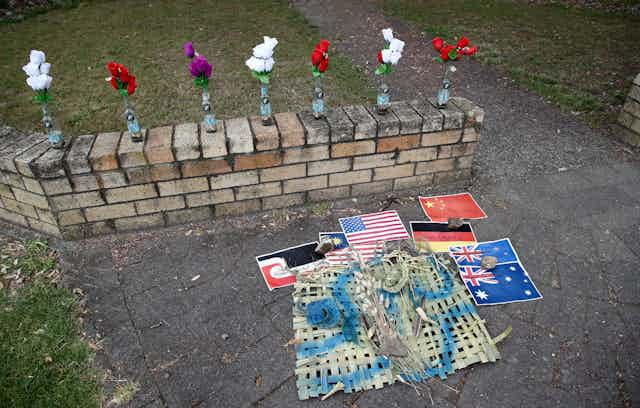
Whakaari tragedy: court case highlights just how complex it is to forecast a volcanic eruption
Professor of Earth Sciences, University of Auckland, Waipapa Taumata Rau
Senior lecturer, University of Canterbury
Disclosure statement
The authors do not work for, consult, own shares in or receive funding from any company or organisation that would benefit from this article, and have disclosed no relevant affiliations beyond their academic appointment.
University of Auckland and University of Canterbury provide funding as members of The Conversation AU.
University of Auckland, Waipapa Taumata Rau and University of Canterbury provide funding as members of The Conversation NZ.
View all partners
While today’s pre-trial hearing over the Whakaari White Island tragedy revealed most of the 13 parties charged have yet to enter pleas, there is no disputing the basic facts.
The December 9 2019 eruption struck when 47 people were on the small island; 22 people died and survivors were left with severe or critical injuries.
But what will really be on trial when proceedings resume, most likely in September? Ultimately, it comes down to how the individuals present on the day perceived the natural hazard and risk, and especially its uncertainty.
This understanding rests on processes we have in place to communicate and manage risk for workers and tourists exposed to unpredictable natural environments. It is really these processes that should be on trial.
Scientists are at the frontline of understanding volcanic nature. They use physical, chemical and geological methods to delve into volcanic systems.
This knowledge is the first step in a long chain: feeding models of volcanic processes, which are used to produce hazard forecasts that, finally, are converted to hazard maps and public warnings. But each step has its uncertainties, and no scientist is certain of the future — only the odds.
Read more: Scientists should welcome charges against agency over Whakaari/White Island — if it helps improve early warning systems
Monitoring volcanic hazard
To monitor a volcano like Whakaari, we cannot look directly below the eruption vent. Instead, we interpret internal processes indirectly, using seismic sensors, gas output, heat flow and satellite measurements — and then work out what the data mean. There isn’t always a straight answer.
For instance, if gas and heat output drop, it might mean the system is cooling or magma has waned. Or, it could be that a clay or liquid sulphur seal has formed, trapping gas and heat. The difference in risk and consequence is obviously huge.
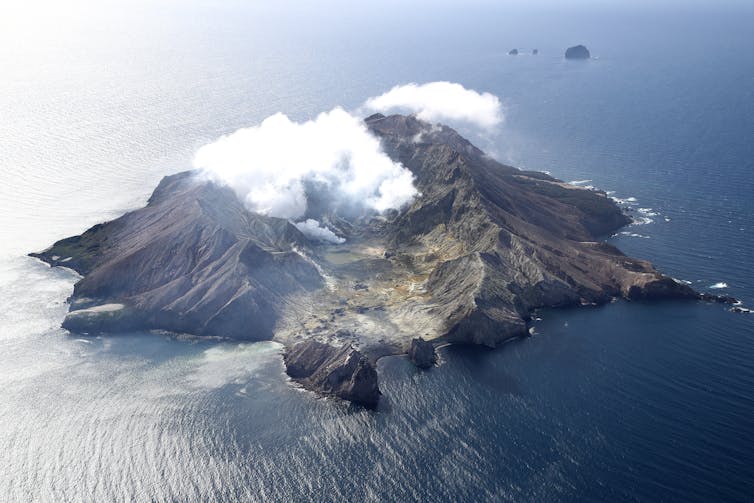
We rely heavily on seismic data (ground vibrations mostly too small for people to feel) collected by GeoNet in real time. But the volcanic system is “noisy” thanks to ocean waves, wind or rain. Some seismic signals are distinct, such as the cracking of rock when magma rises, others are diffuse, such as fluids moving through voids.
Read more: New Zealand's White Island is likely to erupt violently again, but a new alert system could give hours of warning and save lives
We are constantly learning about new features of Whakaari’s volcanic system. The vent area changes after each eruption and is affected by deep and shallow processes, such as magma intrusion, a lake over the crater or landslide debris.
Magma rises in unusual ways, sometimes abruptly, but mainly slowly at Whakaari. It often just stalls well below the crater, slowly crystallising and degassing in place.
Communicating monitoring information to forecast hazard and risk requires a degree of simplification. It is generally impossible to say in black and white whether people should go onto a volcano. Thresholds of acceptable risk need to be set, often with little quantitative guidance in terms of the probability of an eruption.
What went wrong at Whakaari
For those guides traversing the volcano every day, familiarity breeds a false impression of safety. Even with a full understanding of risks, after the novelty of the first few visits, fear dissipates and familiarity leads to an expectation that it will always be safe.
But risk is cumulative with exposure time. Feeling safer over time is the opposite of reality. How much of a factor was overconfidence of tourism operators who had visited Whakaari for decades without major incident?

Different people are involved in decision making in tourism activities, and they perceive hazard differently. For a visitor present for two hours, the risk is much lower due to their brief exposure, but how can the magnitude of risk be expressed to short-term visitors adequately?
Say there is a 0.1% chance of an eruption today: would you visit the volcano and take the 1 in 1,000 risk? But visit every day over a year, and that grows to a 1 in 3 chance.
A better approach is to distinguish days when it is safe (say, 1 in 10,000 risk) from those that are marked as “eruption possible” (1 in 50). These assessments are possible now, although they are plagued by data uncertainties, human biases and methodological arguments.
One focus during the trial will be risk messaging. Two weeks before the eruption, the Volcanic Alert Level was changed to 2 (level 3 means an eruption is occurring). The last communication before the event had contrasting messages:
The monitoring observations bear some similarities with those seen during the 2011-2016 period when Whakaari/White Island was more active and stronger volcanic activity occurred.
While the [fountaining] activity is contained to the far side of the lake, the current level of activity does not pose a direct hazard to visitors.
This shows how difficult it is to address uncertainty in observation through to forecasting. With 20/20 hindsight it is easy to judge the outcome, even if it is grossly unfair to those doing their best at the time to provide expert judgement and balance.
An added factor is that Whakaari is privately owned and sits in an unusual administrative “grey” zone. It was unclear who would have a mandate to “close” the island. While GNS Science provided warning information, it had no jurisdiction or control.
Contrast that with the Department of Conservation, which was quick to restrict access at Mt Ruapehu at the end of last year when GNS Science raised its alert level to 2 .
This brings into question the role of the National Emergency Management Authority ( NEMA ), local authorities and indeed the owners of the island.
One of the most important considerations we must take forward from the tragedy is the cumulative nature of volcanic risk. The length of exposure time is critical. In basic risk calculations, using conservative figures and OECD accepted life-safety models, repeated visits to Whakaari by tour guides place them near unacceptable limits.
To get better at forecasting different levels of eruption risk requires advances in our basic science, as well as automated systems that can dispassionately judge risk and raise concerns. It also requires a more rigorous regime that ties warning systems to restrictions in access.
Even with this, the compounding uncertainties of how we measure and interpret this natural system mean it will never be completely safe.
- Risk assessment
- New Zealand stories
- Natural hazards
- White Island eruption
- Whakaari charges

Scheduling Analyst

Assistant Editor - 1 year cadetship

Executive Dean, Faculty of Health

Lecturer/Senior Lecturer, Earth System Science (School of Science)

Sydney Horizon Educators (Identified)
- Today's news
- Reviews and deals
- Climate change
- 2024 election
- Fall allergies
- Health news
- Mental health
- Sexual health
- Family health
- So mini ways
- Unapologetically
- Buying guides
Entertainment
- How to Watch
- My watchlist
- Stock market
- Biden economy
- Personal finance
- Stocks: most active
- Stocks: gainers
- Stocks: losers
- Trending tickers
- World indices
- US Treasury bonds
- Top mutual funds
- Highest open interest
- Highest implied volatility
- Currency converter
- Basic materials
- Communication services
- Consumer cyclical
- Consumer defensive
- Financial services
- Industrials
- Real estate
- Mutual funds
- Credit cards
- Balance transfer cards
- Cash back cards
- Rewards cards
- Travel cards
- Online checking
- High-yield savings
- Money market
- Home equity loan
- Personal loans
- Student loans
- Options pit
- Fantasy football
- Pro Pick 'Em
- College Pick 'Em
- Fantasy baseball
- Fantasy hockey
- Fantasy basketball
- Download the app
- Daily fantasy
- Scores and schedules
- GameChannel
- World Baseball Classic
- Premier League
- CONCACAF League
- Champions League
- Motorsports
- Horse racing
- Newsletters
New on Yahoo
- Privacy Dashboard
The Family Who Owns Whakaari Got Slapped With A Lawsuit After The Tragedy
The Netflix documentary The Volcano: Rescue From Whakaari dives into the tragic story of the unexpected eruption of New Zealand’s Whakaari volcano in December 2019.
The eruption occurred while 47 people were visiting Whakaari (also called White Island), where the volcano is located. During the eruption and its aftermath, 22 people —including some teens as young 13— died in the blast , per RNZ . Emergency crews had difficulty rescuing survivors due to the volcanic ash and heat, which made the situation even more deadly.
But where is Whakaari volcano , exactly, and is it currently open to visitors? Here’s the latest:
Where is Whakaari?
Whakaari is a volcano that’s also known as White Island. It’s located in the Bay of Plenty, 30 miles from New Zealand’s North Island.
The Smithsonian's Global Volcanism Program says that the island's volcano has "been New Zealand’s most active volcano since 1976." It is still considered an active volcano.
Who owns Whakaari?
The island is owned by three brothers: Andrew, James, and Peter Buttle, under the company name of Whakaari Management Ltd, per RNZ . The island was first purchased in 1936 by the brothers' grandfather, Auckland stockbroker George Raymond Buttle.
Following the 2019 explosion, the company was charged with failing to understand the volcano’s hazards, failing to ensure tourists would be safe, and failing to make sure there was a safe way to evacuate, RNZ reported. However, the family argued that tour companies that were granted permission to visit the island were ultimately responsible for the safety of the tourists there.
Back in October of 2022, they asked for charges against them to be dropped in court. The family's lawyer told the Auckland District Court that "the family had little influence over the tours," per RNZ.
What's the latest on the lawsuits?
In December of 2022, RNZ reported that 11 of the 13 groups "charged with health and safety law breaches" in the incident have pleaded not guilty and will head to trial in July of 2023. This includes two helicopter operators, the Buttles, and a tour group.
A charge against the National Emergency Management Agency and one of two charges against GNS Science, a research institute, have been dismissed. One tour company has pleaded guilty in "failing to undertake an adequate risk assessment, or implement appropriate controls to ensure the health and safety of tourists," the outlet said.
Can you still visit Whakaari?
Kind of. The Whakaari website acknowledges the destruction wreaked by the December 2019 eruption, noting that “as a result of the eruption event, there are currently no on-land tours of the island in operation.”
However, the website explains, you can still see the island through scenic flights, lookout points, and virtually visit through an interactive exhibit known as the Whakaari/White Island Experience Room .
When did the volcano last erupt?
The volcano’s last known eruption was on Dec. 9, 2019, according to the Smithsonian Institute . However, there have been gas and steam emissions, along with “continuing unrest” at the volcano since then, Institute says.
The Volcano: Rescue From Whakaari is streaming now on Netflix.
You Might Also Like
Oprah’s Favorite Things Of 2022 Is Here—Gift These 20 Amazing Finds This Year
Jennifer Garner Swears By This Retinol Eye Cream
These New Kicks Will Help You Smash Your Cross-Training Goals
Recommended Stories
Former nba guard darius morris dies at 33.
Former NBA guard Darius Morris has died at the age of 33. He played for five teams during his four NBA seasons. Morris played college basketball at Michigan.

The FDIC change that leaves wealthy bank depositors with less protection
Affluent Americans may want to double-check how much of their bank deposits are protected by government-backed insurance. The rules governing trust accounts just changed.
Phil Mickelson on the majors: 'What if none of the LIV players played?'
Phil Mickelson hints that big changes could be coming to LIV Golf's rosters, and the majors will need to pay attention.
Heat's Pat Riley unhappy with Jimmy Butler's remarks on Celtics and Knicks, implies he needs to play more
Miami Heat president Pat Riley rebuked comments Jimmy Butler made about the Boston Celtics and New York Knicks, while also implying that his star needs to play more.
Blockbuster May trade by Padres, MVP Ohtani has arrived, Willie Mays’ 93rd birthday & weekend recap
Jake Mintz & Jordan Shusterman discuss the Padres-Marlins trade that sent Luis Arraez to San Diego, as well as recap all the action from this weekend in baseball and send birthday wishes to hall-of-famer Willie Mays.
Social Security just passed Medicare as the government's most pressing insolvency risk
An annual government report offered a glimmer of good news for Social Security and a jolt of good news for Medicare even as both programs continue to be on pace to run dry next decade.
NBA playoffs: Officials admit they flubbed critical kick-ball call in controversial final minute of Pacers-Knicks
Tuesday's last-2-minute report should be interesting.
No one was airing Angel Reese and Kamilla Cardoso's WNBA preseason debuts, so an X user livestreamed it
The quality was choppy, but it was better than what the WNBA had.
Timberwolves coach Chris Finch calls Jamal Murray's heat-pack toss on court 'inexcusable and dangerous'
Murray made a bad night on the court worse during a moment of frustration on the bench.
NFL Power Rankings, draft edition: Did Patriots fix their offensive issues?
Which teams did the best in the NFL Draft?
- International edition
- Australia edition
- Europe edition

Couple who survived White Island volcano tell court they weren’t warned of danger
US couple gives evidence to New Zealand court in case against island’s owners and tourism operators
An American couple who were badly burned when Whakaari/White Island erupted in December 2019, killing 22 of the 47 people in its crater, told a New Zealand court that neither their guides nor anyone else involved in their trip to the crater told them that such an event was likely – or even possible. Information about the dangers they faced on the island volcano was minimal, they said, and safety protections lax.
Evidence from Matthew Urey, 40, and Lauren Urey, 36, opened the prosecution’s case in the Auckland district court on Wednesday, beginning a lengthy trial for the island’s owners and other tourism companies involved in the ill-fated trip.
The six individuals and entities have pleaded not guilty to charges of failures of health and safety law brought by New Zealand’s labour inspectorate, after the most extensive investigation in the agency’s history.
The couple were honeymooning on a Royal Caribbean cruise and had booked their excursion to Whakaari/White Island, off the coast of New Zealand’s North Island, through the same company months earlier. While the brochure advertised the site as the country’s most active volcano, Matt Urey said, he assumed it was safe. The only precautions listed were a requirement to wear closed-toe shoes and a warning that those with mobility issues or in wheelchairs should not subscribe.
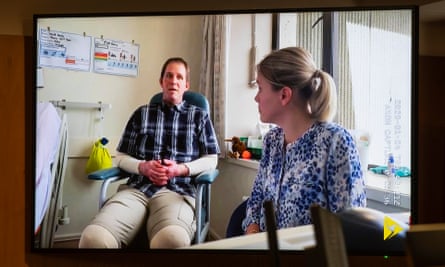
He would “absolutely not” have booked the trip if he had known there was a chance Whakaari would erupt, Urey recounted in a video statement played for the court on Wednesday.
“We were on our honeymoon, we were just looking to relax,” he said. “We weren’t looking for thrills.”
In their statements and follow-up questions from lawyers, Urey and his wife – who returned to New Zealand from Richmond, Virginia, to give evidence – said there was no further safety information offered by any party before they arrived on the island.
They only learned that the volcano’s alert level had been lifted from one to two when Lauren Urey – nervous about the trip – asked a guide about the chances of an eruption. By then, the group was already on the island. The couple said they were not told what such a risk rating signified. The guide reassured them, Lauren Urey said, that visitors to the island would receive a 10-minute warning of any volcanic activity.
The tourists said they had been issued with hard hats and “optional” respirator masks, but no other safety gear. The only other instruction the two guides issued, the couple added, was to keep to the path as they walked and not to rush ahead or fall behind the group.
There was no 10-minute warning of the eruption, the Ureys told the court. Instead, another tourist pointed at the plume of smoke that suddenly appeared. Then came the urging from their guide to “run”, before “chaos” broke out, Matt Urey said.
Lauren Urey described clutching her husband’s hand as they hunkered behind a boulder while the air filled with ash, rocks and screaming.
“I thought for sure that we were going to die, and I wanted him to know that I loved him,” she said. “My respirator was falling off, so at that point it was hard for me to breathe. I was gasping for air. I thought it was any second before I was going to die.”
The couple recounted a terrible descent to the island’s wharf, both of them stumbling and in pain. Matt Urey, who was wearing a T-shirt and shorts, said his bare limbs bore the worst of his injuries. He told the court the tour operators should have required customers wear long sleeves and trousers.
Medical attention by another tourist on the 1.5-hour boat trip from the island to shore had saved her life as she drifted in and out of consciousness, Lauren Urey said.
Both are still recovering from their burns. Lauren Urey said she had faced surgeries about once a month since the eruption, and the pair had been forced to delay starting a family.
Kirsty McDonald, the prosecutor, told the court on Tuesday that the island’s owners – Andrew, James and Peter Buttle – never bothered to know the risks, had no health and safety procedures in place, and attempted to divert responsibility to the tour operators who paid them license fees and commissions.
Counsel for the Buttles chose not to question Matt and Lauren Urey on Wednesday. David Neutze, a lawyer representing ID Tours – a booking agency that liaised between international and domestic tour operators – questioned the couple’s assumptions about the island’s safety, and asked Lauren Urey to elaborate on the misgivings she said she had felt before the trip.
She responded that her anxiety about visiting a volcano was a result of post-traumatic stress disorder she already suffered, and had not been prompted by any specific safety information about Whakaari/White Island.
In March, ID Tours failed in a bid to have the charges against the company dismissed. It said its role in the tourism “supply chain” did not extend to what happened on the island, a claim the judge rejected.
Several other companies involved in facilitating the trip to Whakaari have already admitted to charges against them. They will be sentenced after the current trial, which is expected to take four months.
If convicted, the organisations face maximum fines of NZ$1.5m ($930,000/£720,000) or NZ$300,000 for individuals.
- White Island volcano
- New Zealand
- Asia Pacific

Owners of New Zealand volcano that fatally erupted deny responsibility for visitor safety
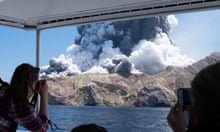
Whakaari White Island eruption: negligence charges dropped against two tourism agencies
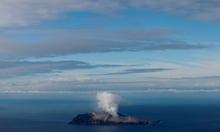
New Zealand judge dismisses charges against White Island volcano owners

White Island trial: Australian witness says no warnings were given ahead of deadly volcano eruption

Volcano tourist disaster trial hears White Island owners put profits before safety

New Zealand scientists find tremor link that could predict volcanic eruptions
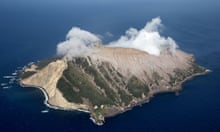
White Island anniversary passes quietly, with healing – and reckoning

New Zealand volcano eruption: Jacinda Ardern pays tribute to team who recovered bodies – as it happened
Most viewed.
Navigation for News Categories
Premiered whakaari eruption doco fails to mention charges, victims' lawsuits.
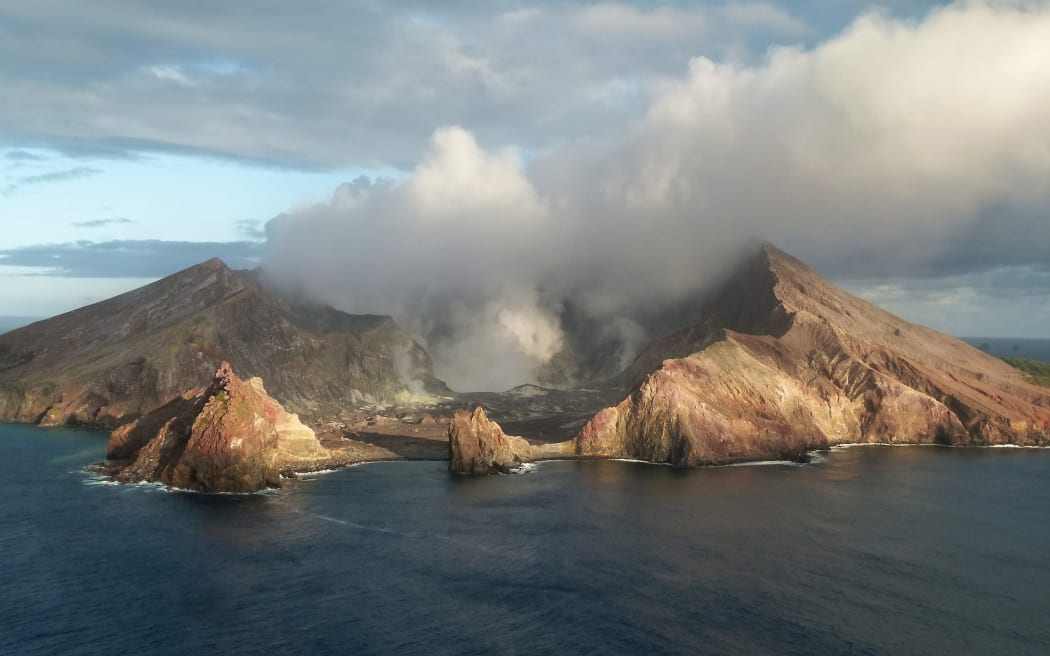
Whakaari / White Island erupted in 2019. Photo: Supplied/ University of Canterbury
A version of the Netflix documentary The Volcano: Rescue from Whakaari that premiered last month does not mention WorkSafe charges laid against companies after the deadly eruption, or lawsuits led by some victims.
But it does interview some of those accused of safety failings leading up to the tragedy, and those who filed lawsuits.
The explosion on volcano Whakaari / White Island three years ago today ultimately took 22 lives, and left more than a dozen others critically injured with burns and blast injuries.
Forty-seven people were on the island at the time, most with White Island Tours.
Eleven parties charged with health and safety law breaches leading up to the eruption are expected to go to trial in July next year, for four months, after pleading not guilty.
This includes the helicopter operators Volcanic Air and Kāhu NZ, which were interviewed in the Netflix documentary, the island's owners the Buttles and White Island Tours.
Asked about the omission of mention of court action in the documentary premiered to a select audience last month, WorkSafe said it "acknowledges and respects the editorial independence of filmmakers".
"WorkSafe hasn't been shown the documentary… WorkSafe remembers all people impacted by the event, including the survivors and families of the deceased, on the third anniversary."
Pilots from Volcanic Air and Kāhu NZ have since received bravery awards for going to the island after the eruption to rescue survivors , when emergency services had deemed it too dangerous to send their own staff.
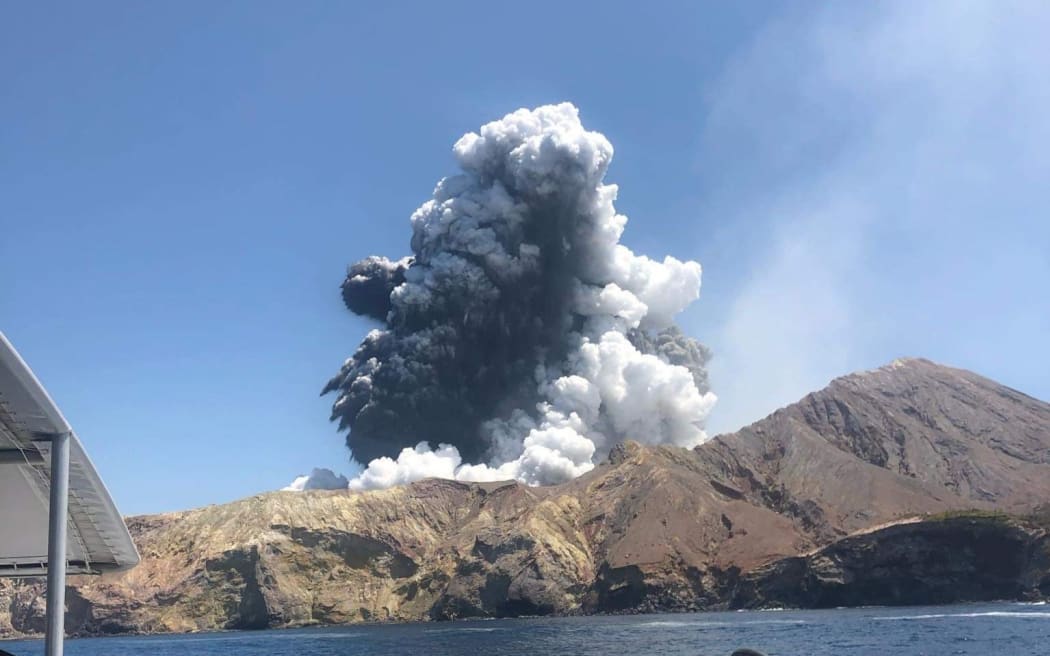
Twenty-two people lost their lives in the eruption. Photo: Supplied / Lillani Hopkins
The documentary was directed by Rory Kennedy, and Hollywood star Leonardo DiCaprio is one of the producers.
Representatives from the production team did not respond to RNZ's request for comment.
The final edited production is playing in some cinemas from Friday, and on Netflix from 16 December.
The documentary also features interviews with US survivors Matt and Lauren Urey, who filed lawsuits against the cruise operator Royal Caribbean after the eruption, but this legal action also is not mentioned in the film.
The premiered version concluded by saying: "No party or individual has accepted responsibility for the injuries sustained and lives lost. The island remains closed to all visitors."
Thirteen parties were charged with health and safety law breaches after the tragedy. A charge against the National Emergency Management Agency has since been dismissed, as has one of two charges against GNS Science.
Tour company Inflite pleaded guilty , admitting it failed to undertake an adequate risk assessment, or implement appropriate controls to ensure the health and safety of tourists.
They flew to the island on the day of the eruption, in the morning, with Kāhu NZ.
Inflite was ordered to pay more than $250,000.
- natural disasters
- Bay of Plenty
Copyright © 2022 , Radio New Zealand
Related Stories
Dismissed charge against nema erodes charge against gns - law lecturer.
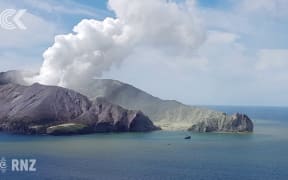
A law lecturer says the failure of one of the Whakaari White island tragedy prosecutions erodes another charge against a government agency.
Whakaari eruption two years on: Iwi shares karakia in memory of victims
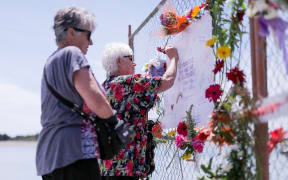
The Whakatāne community is gathering for a special ceremony to mark two years since the Whakaari / White Island eruption.
Whakaari / White Island owners' bid to get charges dismissed fails

The owners of Whakaari Island had their application for dismissal thrown out in the Auckland District Court today.
Owners of Whakaari / White Island argue for charges against them to be dropped
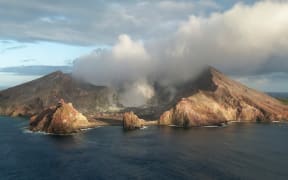
The family who owns Whakaari / White Island today argued in court for charges against them to be dropped. But WorkSafe rejects that.
New Zealand
- Health explainer: Hormonal birth control
- The New Yorker' Kyle Chayka on how AI has taken over our decision making
- 'Pretty dire' situation for patients as junior doctors strike over pay cuts
- Jetstar apologises for 'letting customers down', admits some entitled to compensation
- Mazda6, Hyundai Sante Fe score poorly for reliability, owner satisfaction - Consumer survey
- NIWA job cuts could gut team of NZ's top climate modellers
Get the RNZ app
for ad-free news and current affairs

Top News stories
- MP's comments 'bang on' despite negative response from other parties - Te Pāti Māori
- Rafah 'last place of safety' in Gaza, UN aid boss warns
New Zealand RSS
Follow RNZ News
White Island/Whakaari victims accused of 'pointless charade' in lawsuit
Share this article
White Island, shortly after the December 2019 eruption. Photo / White Island Flights, File
Victims of the White Island/Whakaari volcano eruption have been rebuked in court for allegedly trying to delay a lawsuit brought against them by the cruise line that took them to the island.
An application filed in the case by American couple Paul and Ivy Reed, who were injured in the blast, was described as a "pointless charade" in the Australian Federal Court on Wednesday.
The volcano eruption on New Zealand's Whakaari/White Island on December 9, 2019, killed 22 people and left 25 others injured.

The majority of the 47 people on the island at the time of the eruption, including the Reeds, were there as part of the Ovation of the Seas cruise.
The couple has filed a lawsuit against cruise line Royal Caribbean in Florida, saying they are owed damages after the eruption left them with severe burns, scarring, reduced use of their limbs and extremities and ongoing emotional distress.
The company is also being sued in Florida by Australian mother and daughter Marie and Stephanie Browitt. The pair lost half their family — father Paul and daughter Krystal — and Stephanie was badly burned.

In response to the lawsuits, Royal Caribbean has taken action against both families in the Australian Federal Court, arguing the ticket terms and conditions meant they could only sue in NSW.
The cruise line is seeking orders restraining the families from continuing with the Florida lawsuits.
In a case management hearing on Wednesday, lawyer Niksa Stanisic said he had been instructed to file an application arguing the Reeds had not been properly served with court documents.
Justice Angus Stewart asked how the application to set aside service was not "a bald-faced attempt at delaying the current proceedings".
Stanisic said the primary concern was preventing the couple from being adversely affected in the Florida proceedings by service issues in the Australian proceedings.

But asked by Justice Stewart exactly how that would occur, Stanisic said he could not give an answer.
Justice Stewart said he was only offering his first impression on the application, but "it does seem to me that this is just a pointless charade".
Last month, the judge ruled the cruise company could serve documents on the Reeds by emailing them to their US lawyers, despite the American lawyers saying they did not have the authority to accept them.
This occurred after process server Vance Warren swore an affidavit about his "many attempts" at handing over the documents.
Those efforts included visits on February 8, 9, 10 and 12 to the Reeds' home when they appeared to be there, but no one answered the knock at the door, the judge said.
"Mr Warren formed the view that the respondents were attempting to avoid service.
"There is no conceivable – at least to me – reasonable explanation why the respondents would not give their US lawyers authority to accept service of process on their behalf, or why they would not answer the knock of the process server.
"The most obvious explanation that occurs to me is that the respondents are seeking to avoid service so as to delay the proceeding in this court and to thereby potentially hinder its prospects."
The matter returns to court on Friday.

Latest from New Zealand

Advice suggests Government’s water reforms will cost Aucklanders less than Labour’s - for now
Comparisons are difficult,

'He was limp': Mum and 11yo share story of 'terribly' scary asthma attack

Man who 'foiled' ankle monitoring bracelet objects to being jailed

Man wanted in relation to Ponsonby Rd shooting had prior assault charge

It’s not just what’s in the jar

IMAGES
COMMENTS
Aa aerial view of Whakaari/White Island volcano on 12 December 2019. A New Zealand court has ruled that the tour operators and owners of the island must pay $10m after an eruption killed 22 people ...
The trial over the deadly 2019 Whakaari White Island eruption has heard there was a 5 per cent chance multiple people would die during tours of the volcano.
Tour operators and a company which owns the New Zealand island where a volcanic eruption killed 22 people and wounded many others have been fined $1.6 million (NZ$2.6 million), and ordered to pay ...
Whakaari Management will be sentenced in February, along with the six other parties that have been found guilty. They each face fines of up to 1.5 million New Zealand dollars, or about $876,000.
New court documents filed in the US claim cruise passengers hurt and killed in the Whakaari eruption weren't warned about the dangers they were walking into. ... is representing several plaintiffs in action against US-based cruise company Royal Caribbean and Whakatāne tour company White Island Tours. The volcano erupted in December 2019 while ...
White Island Tours won't be sentenced until the charges against other defendants are resolved. Twenty-two people died and dozens were injured when the Whakaari/White Island volcano off the coast ...
Eleven people, who were on Whakaari, also known as White Island, or aboard the Ovation of the Seas when the volcano erupted in December 2019, are suing the ship's owner Royal Caribbean Cruises in ...
BBC News. A New Zealand court has ordered NZ$10m (£4.8m; $6m) in compensation to the victims of the White Island volcano disaster, where 22 people died. Some 47 people were touring the volcano ...
While today's pre-trial hearing over the Whakaari White Island tragedy revealed most of the 13 parties charged have yet to enter pleas, there is no disputing the basic facts. The December 9 2019 ...
Background Whakaari / White Island in 2013. Whakaari / White Island is an active andesite stratovolcano, situated 48 km (30 mi; 26 nmi) off the north-northeast coast of the North Island of New Zealand in the Bay of Plenty.The volcano has erupted many times in recent history, including several times in the 1980s. A major eruption formed a new crater in 2000, and small eruptions occurred in 2012 ...
The Netflix documentary The Volcano: Rescue From Whakaari dives into the tragic story of the unexpected eruption of New Zealand's Whakaari volcano in December 2019. The eruption occurred while ...
Royal Caribbean, the Singh complaint alleges, only referred to White Island as "one of the most active volcanoes in the world" - with an "active" volcano, the lawyers say, only being defined as ...
Stuff
An American couple who were badly burned when Whakaari/White Island erupted in December 2019, killing 22 of the 47 people in its crater, told a New Zealand court that neither their guides nor ...
A version of the Netflix documentary The Volcano: Rescue from Whakaari that premiered last month does not mention WorkSafe charges laid against companies after the deadly eruption, or lawsuits led by some victims.. But it does interview some of those accused of safety failings leading up to the tragedy, and those who filed lawsuits.
The volcano eruption on New Zealand's Whakaari/White Island on December 9, 2019, killed 22 people and left 25 others injured. Rick Reed and wife Ivy Kohn Reed on Whakaari White Island 15 minutes ...